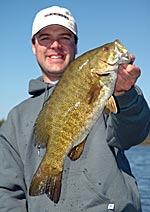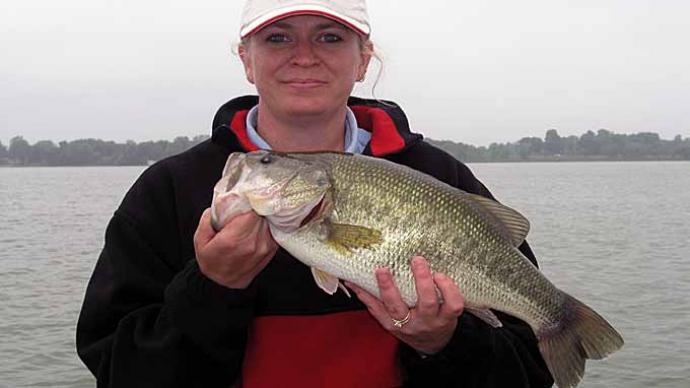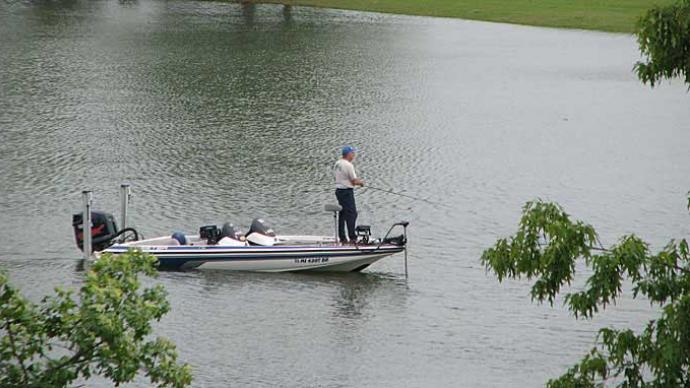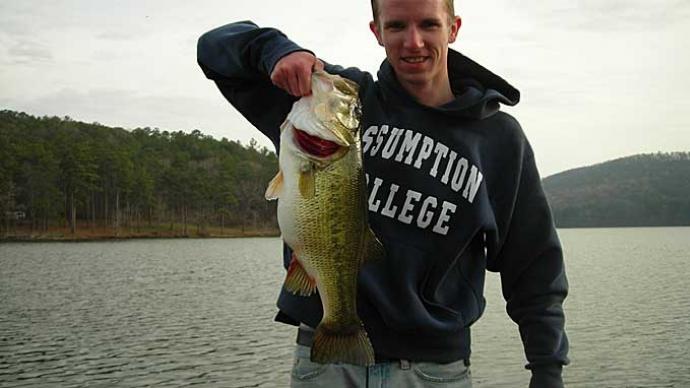
Nothing is more demoralizing (and inevitable) than a significant cold front during your spring bass fishing trip to the lake. All week, you've read glowing reports of lots of big bass being caught shallow, nearly chasing baits onto the bank to eat them. Then you watch your local forecast, and the bad news is delivered, dooming your trip, right? Not necessarily. While a significant cold front in the spring can make conditions miserable for anglers, with a bit of adaptation, you'll be able to save your trip and possibly even have one of your best trips ever. Here's how.
For starters, don't get ahead of the fish. While the air temperature drops quickly after a cold front, the water temperature often takes twelve to forty-eight hours to cool dramatically. If conditions remain cloudy, rainy, or windy, the bass often remain in pre-frontal patterns, biting aggressively until the skies clear and the water cools significantly.
Once the front settles in and the barometric pressure starts building, conditions typically change. Classic indicators are sunny, "bluebird" skies, and diminishing north or east winds. Water temperatures are now significantly cooler than before.
Bass often move onto shallow flats during warming trends and roam widely. After the front, bass typically moves slightly deeper and much tighter to cover than where they were hanging out before the weather changed. They typically will be found along channel bends in the creeks running through spawning flats or on points at the mouth of a flat. Usually, bass won't travel very far, moving to the closest available option. Other bass won't move at all, instead of burying themselves in the thickest cover available, docks, wood, or weeds.
The good news is that once you relocate the fish, they are usually in large groups, so productive spots likely produce multiple fish. The more prolonged and severe the cold front, typically the farther towards the mouth of the coves and the main lake, the bass will move.
Post frontal fishing success is less dependent upon lure selection than location, so thoroughly seine critical spots with a few tried and true choices. Your first option is a 3/8- to 1/2-ounce weedless jig trimmed with a plastic craw in the traditional black and blue color scheme. No other lure is better at going into heavy cover and extracting big bass in the springtime.
I use Lake Fork Trophy Lure's Mega Weight jig because its small tungsten head lets it slip through the heaviest cover, while its razor-sharp Owner hook is beefy enough to drag them out. The Fork Craw trailer in the blue bruiser color is a perfect match for the jig, with the hollow tube body making the craws stand up in the bass' face after each hop, just like the real thing. Big stumps along a creek channel bend or the deep edge of submerged hydrilla on points are prime territory for this lure. Pitch your jig precisely to the heaviest cover you can find and work it as slowly as you can stand, making repeated casts to likely areas. Many bites will come when the jig is sitting motionless on the bottom and only after casting to the same place multiple times.
Another great option is suspending hard plastic jerkbaits, especially in areas with less cover. These baits are neutrally buoyant, allowing them to dive several feet below the surface and remain there, sitting in front of the bass' face without moving. Fish these very slowly with a couple of slight twitches between pauses of five to sixty seconds.
Finally, "yo-yoing" 1/2 ounce red or crawfish-colored lipless crankbaits provoke reaction strikes from lethargic bass that turn their noses at even the slowest of finesse presentations. When submerged milfoil, coontail, or hydrilla is present, make long casts over the grass beds and let your bait fall into the weeds. Sharply snap your rod upwards, ripping the crankbait free and reeling it until the bait catches grass again, followed by another sharp rod snap. Repeat this process back to the boat. The rattle of the bait and the fleeing motion as it rips free from the grass triggers a response from bass even on the slowest of days. Plus, the constant snapping of the rod will keep you warm while the cold north wind blows.
Cold fronts result in slow fishing, at least until you find a concentration of fish. Once you find them, dissect the spot to extract multiple bass. Big schools of bass in small areas after cold fronts can result in some of the hottest fishing of the year, even if the weatherman tells you otherwise.
Here's hoping you catch the lunker of your dreams. Of course, there are no absolutes in bass fishing. However, I hope these basic rules of thumb help make your decision on what to rig up a little easier on your next trip. Here's hoping you catch the lunker of your dreams.




